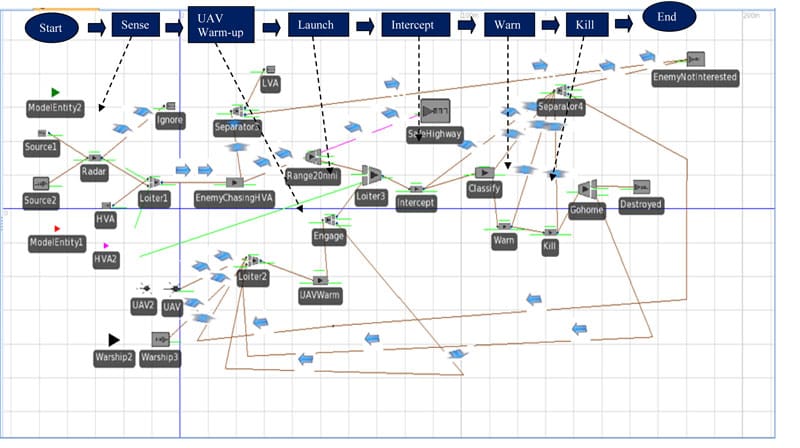
Warship with One UAV. This is an actual screen shot of the Simio simulation of a warship with one UAV. At the top of the figure are the different phases and where they are located in the simulation.

Simio, a developer of 3D object-oriented simulation software, was chosen by the Naval Postgraduate School (NPS) for a project that employed systems engineering to combat maritime piracy. NPS specifically used Simio to evaluate how to protect a high value asset (HVA) from unfriendly adversaries, detect friendly and foe vessels in an area of coverage, and have an asset and ability available to intercept a foe.
“We are very happy that Simio was selected among the available simulation tools for use by NPS for modeling maritime capabilities in remote sea locations,” said Dr. Dennis Pegden, Founder and CEO of Simio. “We hope that this will be the first of many applications of Simio targeted at the prevention of piracy, drug trafficking, and increased security within our ports, waterways, and coastal areas.”
In a technical report on the project, the project team deemed selection of the modeling and simulation tool “critical to the outcome of data needed for analysis.”
“The project team decided to use SIMIO in preference to ARENA because SIMIO had better graphics and extended capabilities that were not available in ARENA,” the project team stated in the report.
Simio was picked from a field of simulation software tools for its “dynamic modeling capabilities” that allowed the team to “help answer questions on how an existing or a proposed system will perform,” the report stated.
The report states that the Somalian piracy problem was chosen as the most stressing scenario for the analysis of current alternatives.
NPS used Simio to run several scenarios where a HVA would be defended by a warship with one or two Unmanned Air Vehicles (UAVs). NPS also tested how a HVA would be defended by a Remote Sea Station and two UAVs.